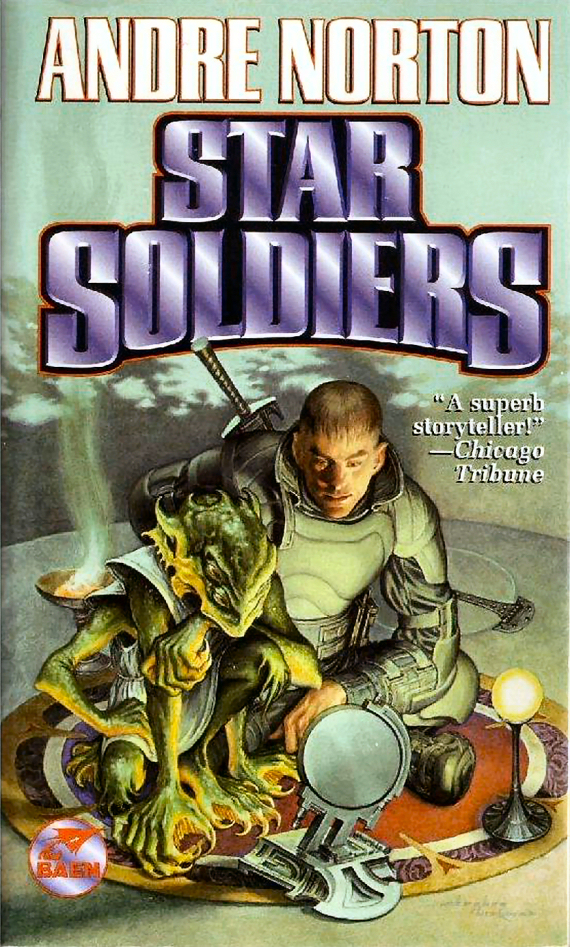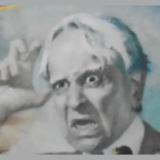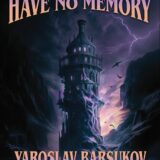
I know this is going to seem a bit self-aggrandizing, but hey—what good’s a bully pulpit if you don’t use it, eh? I just found out a few days ago that one of my stories—called “Gifted Fingers”—has been accepted for publication in the Canadian anthology Compostela, or Tesseracts 20! (Now, don’t get excited—Tesseracts 19 just came out recently, and the announcement of Tesseracts 20 was just formally made, so you’ll have to wait most of a year to read it.) Brian Hades, the publisher, says “The Tesseracts series is an ongoing anthology of literary and commercial Canadian speculative short fiction representing as many Provinces and Territories from across Canada as possible. The editors are tasked with selecting 20-25 submissions for inclusion in the anthology [note: the actual list is 31 authors!]. Compostela (Tesseracts Twenty) is an anthology of hard and soft science fiction stories that best represent a futuristic view of the sciences and how humanity might be affected (for better or worse) by a reliance in [sic] all things technological. Look for it in the spring of 2017.” Tesseracts 20/Compostela is edited by Spider Robinson and James Alan Gardner. I’ve been sending stories to Tesseracts off and on for years, and this is the first one I’ve sold them—so that’s one off the old bucket list! If you’re not familiar with Tesseracts, I suggest you go to the Edge Publishing/Tesseracts website and order any one of them—or one of any other Edge books—they’re sure to please! (By the way, the photo of me in Figure 1 was taken by Edmonton’s Shae Guerin, back in the ‘80s, when I belonged to ESFCAS, the Edmonton SF and Comic Arts Society. There’s an amusing story about a hat I used to own very similar to the one in Figure 1. Check out the “Last Words” if you will.)

Back on April 8th, Amazing’s own MD Jackson wrote a column on “Judging a Book by its Cover” (check the link), in which he attempted to judge the worth of an Andre Norton book just by its published covers. The book was called Star Guard, and Jackson showed seven published covers, which tells us that this book has had a rich and varied publishing career! (In fact, the book is still in print, in a way, because it is now part of a pasteup job called Star Soldiers (Figure 3), which includes Star Guard and Star Rangers (Figure 2) as part of what Baen Books calls “Central Control 1 & 2”). Both books deal with a galaxy ruled by Central Control, although the second book takes place over a thousand years after the first. (And Star Soldiers is free for the Kindle right now on Amazon! Check out the awesome Stephen Hickman cover!)
To answer Mike’s question (which was—because he hadn’t read the book—which cover actually or best describes the contents of the book?), all the covers (with the exception of the Polish one) appear to be artistic impressions of the book’s content.

First off, let me tell you that these two books are what we would today call “YA” fiction; there’s nothing overt here, no teenaged protagonist—but the writing is, typically for Norton, neither hard nor demanding to read. And that’s okay—heck, I grew up reading Norton’s stuff. Underneath all her action/adventure writing, there was always a message about tolerance and understanding—not only between humans, but also between humans and aliens (called “Bemmys” in the second novel that forms half of Star Soldiers). Storyline is thus: it’s the year 3600-something, I believe, by Earth reckoning; humans have finally made it to the stars after nearly wiping out the planet with atomic wars. Unfortunately, the stars were already inhabited by older cultures and intelligent species, who viewed Earth and Earthmen (I would say “and women,” but this was written in the ‘50s, and there were darned few female characters in much of science fiction) with a jaundiced eye. The only way we Terrans (as we are called universe-wide) can get off the planet is to serve as mercenaries on backwards planets. Our “Hordes” are foot soldiers carrying swords and air rifles in service to other species (some humanoid, some not); and when our protagonist Kana Karr, Arch Swordsman Third Class, signs on with Yorke’s Horde for his first outworld mission, he discovers that the universe is deeply different from anything he’s been told.
On the planet Fronn, in service to the Llor, Yorke’s people are betrayed and outlawed, and must fight their way to safety. Upon rereading it, I found a comfort in the “good old stuff”—nothing deep, nothing dangerous, but solid, thoughtful action science fiction.
Of course, you must make allowances for the time it was written, more than sixty years ago; there is no mention of computers—or even solar power and electronics, really; there are no women in this book (the author herself was one of the few women writing SF/F at that time, along with Leigh Brackett and Catherine L. Moore); there are references to “course tapes” (those were metal tapes instead of plastic), and interstellar distances are covered in what appears to be really short times (the mechanism of interstellar travel is never mentioned, conveniently enough—it might detract from the storytelling). Science fiction of the fifties and early sixties was usually very white and very male—similar to Futurama’s Zap Brannigan with his cringing green sidekick Kif—and Norton’s use of nonwhite characters as protagonists (The Sioux Spaceman) and her messages of tolerance and cooperation among humans and aliens (read non-white humans, if you will) were ahead of their time. She was also a pioneer in telepathy-related SF; many of her characters had some telepathic abilities, whether with animals (Beastmaster) or aliens or even humans.
If you have a younger fan who’s never read any Norton, I’d suggest you give him or her this one.

Penultimate words: In a related vein (a Norton vein, not a jugular—as Robert Bloch used to say—vein), sometimes I get my comments in a roundabout way: I received the following email from someone who found my wife online and had her forward it to me: “Steve: I came across your articles on cover work/Artists of ACE SciFi doubles in Mar 2014… My interest has been to identify the cover artist for Andrew Norton’s book Daybreak 2250 AD—initially published as an ACE double in 1954… A month ago I contacted the ASFA-art organization… and they threw out two names (Emshwiller and Valigurski), but after doing some further research and seeing your articles these artists may not be possible based on the data you presented as to when they joined ACE? I thought I would contact you to see if you had any clues as to who the possible artist might be? Please let me know if any ideas or additional thoughts on how to unravel this mystery? Thanks for your help…”
—and my answer was: Okay, here’s what I’ve been able to find out. The cover for Daybreak—2250 A.D. by Andre Norton (not Andrew) is not credited anywhere that I can find. (Andre Norton started as Alice Norton, but also wrote as Andrew North and Andre Norton, but later changed her name legally to Andre Alice Norton. So your confusion on the name is understandable.)
It’s definitely not Ed Valigursky (with a “y,” not an “i” at the end of his name). His first Ace cover was for D-73 (Adventures in the Far Future). That’s pretty definitively stated on a couple of websites. The reverse of Ace D-69, Beyond Earth’s Gates by Lewis Padgett (Henry Kuttner) and C.L. Moore, was by Harry L. Barton, whose other Andre Norton book was D-96 (The Last Planet). Other than that, it appears that Barton did only mainstream, mystery (hard-boiled detective books, usually, because his forté appeared to be the half-dressed voluptuous woman) and Westerns; not just for Ace, but for a number of paperback publishers like Avon, Fawcett, etc.
Absolutely nobody that I’ve been able to find credits the cover artist for Daybreak; in my article for Amazing that you cite from 2014, I said that Ed Emshwiller (EMSH)’s first cover for Ace is D-193 (The Man Who Japed)… that’s stated on a couple of websites. However—I have seen enough Emsh covers over the last sixty years of looking at covers that I can state with a fair amount of certainty that this is indeed an Emsh cover. The style is so similar I can’t believe there isn’t an EMSH hidden somewhere in that painting… but it might have been cropped out before the cover was printed. I have checked with the surviving Emshwillers, and his son, Stoney Emshwiller, doesn’t think it is. So to answer your question, I do believe it’s Emshwiller. Though there’s no way, probably, to make sure!
Final words: Regarding the hat in Figure 1, I used to own several and wear them all the time; that started when I played Henry Higgins in a stage production of My Fair Lady in Lewiston, Idaho in the ‘70s. Early in 1983 (according to the date on a letter I received (snail mail; remember that stuff?), I came home from a visit to Avram Davidson, the well-known author, to discover that I’d misplaced my hat. A week or so later, I received the following letter in the style of Charles Fort, accompanied by an ex-library book:
O!
Remarkable things happen. In the antic attick of an old cat-house, a hat materializes. Three blocks away, in the For Sale box of the branch library, a book materializes. In Zamboanga, a rain of frog-shit. In Limp Tickle, Newfoundland, a man named Joab Stamp goes out to jig for codfish beneath a lowering sky, and is never seen again. There are no police in Limp Tickle, but there are in Putney: the blotter in Putney Police Station that night states: Stamp, Mabel, howewife. Reports missing husband, Stamp, Alfred Leonard. Is someone collecting Stamps?
Anyway. Underneath a chair I found a strange hat. According to the logic of Thos. Huxley, it materialized from “A fortuitous concourse of the atoms.” Well, that’s how he explained the universe, and if you’ll believe that, it’s certainly easier to believe it about the hat. It is certainly odd that after I’d gone to some trouble to get Damon Knight’s book on Chas. Fort via interlibrary loan, that a month later (having meanwhile returned it) I found another copy in the For Sale box at the pub. lib. I find the hat fits me. You find you’d like to have the book. So.
Even, Steven? Here’s the book. Enjoy.
[signed] Avram Davidson/March 25/83/Snoqualmie, Washington
It is a letter I treasure, typical of Avram’s witty and erudite sense of humour.
Last and final (as one email marketer keeps telling me in emails) words: For those of us who write short fiction, there’s a new market that’s offering $600 for the best shorts: Fireside Fiction. Fireside is a short story magazine that has two goals in mind: Publish great stories, and pay writers well. They pay above normal rates for their category of magazine: 12.5 cents per word, up to 5,000 words. They say they aim to publish 10,000 new words of fiction each month – paying writers for every word published, and they just want good stories, regardless of genre. They are currently accepting submissions until April 30th. They accept flash fiction, up to 1,000 words, and short stories up to 5,000 words.
Please drop me a comment on this week’s column. You can either comment here, or on my Facebook page, or in the several Facebook groups where I publish a link to this column. It may take a year or two for me to see them, but your comments—positive or negative—are all welcome; and please don’t feel you have to agree with me to comment. My opinion is, as always, my own, and doesn’t necessarily reflect the views of Amazing Stories or its owners, editors, publishers or other columnists. See you next week!











I was looking forward to reading this book shortly. I saw your review but did not read it deliberately to avoid any significant spoilers. Once I read the whole book, I will surely go through the complete review to see whether I have the same opinion that the writer had
Jenny, that’s a perfectly good reason not to read a review; I can’t remember if I put spoilers in this one or not (considering the book’s age, I might have). So I hope you read the review after you read the book. Let me know what you think (of both the book and the review). Thanks!
Amazing post this will gonna share with my team.
history and chronicled fiction: exploit things like ren faires and re-authorizations to arrange a scene from the book
The book is currently in my understanding rundown, so I skimmed over your audit just to stay away from any potential spoilers.
That’s fine, Anna; I may have given away something in my review, so read the book before you read my review. Maybe then you can comment on the review. Thanks!
There are a lot of great ones, but right now I can’t think of any of the titles. I was going to suggest King’s book, but I see someone else beat me to it.
I’m sorry, but I can’t see how your comment applies to this review. Perhaps you appended it to the wrong column?
You must catch the eye of the reader in a flash for an audit. Keep in mind that the reason for a book survey is to make the peruser need to peruse on and to guarantee that a lot of duplicates are sold. What would you be able to state to make this book sound extremely energizing?
Lawrence,
the point of your comment is not clear to me.
Thanks for the mention and the link, Steve! Much appreciated!
The weekend after I wrote my post about Star Guard I went book shopping and picked up the Fawcett edition with the cover by Ken Barr. The book is now in my reading list, so I skimmed over your review just to avoid any possible spoilers.
And, yeah, that cover for Daybreak does certainly look like an Emsh cover. I’d stake my reputation (such as it is) on that being an Emsh except that Stoney disagrees. Curious..